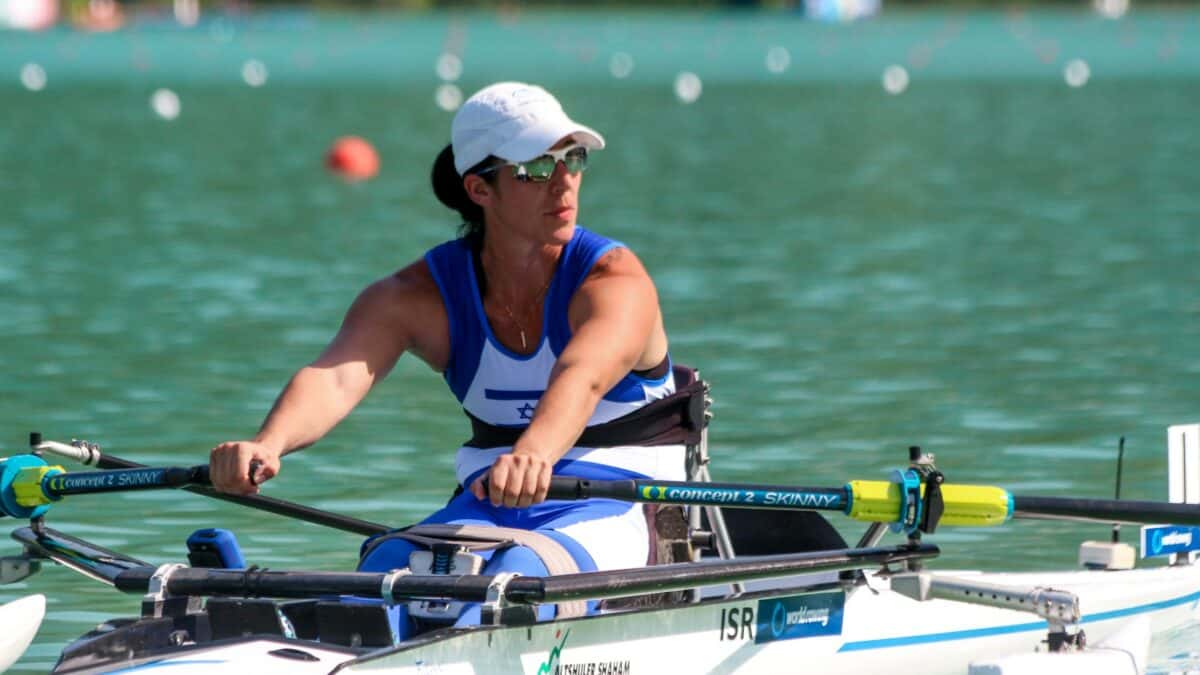
28 Jun 2016
Paralympic countdown: The Parallel Games
The Beijing Paralympics marked the first time that para-rowers took part. This landmark was part of a progression that began when para-rowing boat classes were introduced to the World Rowing Championships in 2002. Since then the field has grown from a handful of participating nations to an ever-deepening and fiercely competitive discipline which saw a record number of countries competing at the 2015 World Rowing Championships.
This steady growth in para-rowing was no doubt helped by its inclusion in the Paralympic Games. This game-changer happened in 2005 when the International Paralympic Committee (IPC) announced that rowing would be included in the Beijing 2008 Games. Not only did this see a growth in participation, but also a rise in the competitiveness and subsequent drop times for the 1000m races.
Paralympic recognition has brought with it growing attention from world experts on the technical, physiological and psychological aspects of the discipline, raising the standard ever closer to that of traditional Olympic rowing.
This rising up of athletes beyond the limitations of particular disability is at the heart of the Paralympic Movement. According to the IPC website, the word “Paralympic” is taken from the Greek “para” (meaning “beside or alongside). This makes the Paralympics the games that are parallel to the Olympics.
A prescription for exercise
The Paralympics has a proud history all its own, stretching back almost 70 years. Just as the modern Olympics can trace its roots to the charismatic dream of Baron Pierre de Coubertin, the early Paralympic movement was championed by the determined efforts of an individual of limitless imagination and lofty ideals.
Neurologist Sir Ludwig Guttmann had been a pioneering specialist in the treatment of spinal injuries in his native Germany in the decades before World War Two. In 1939, Guttmann and his family escaped the threat of Nazi persecution and fled to Great Britain where he became founding director of the National Spinal Injuries Centre at the Stoke Mandeville Hospital in 1944.
Guttmann believed in the power of sport and physical activity in the successful treatment and rehabilitation of injured soldiers. He orchestrated the first “Stoke Mandeville Games for the Paralyzed” to coincide with the start of the London 1948 Olympics. Sixteen competitors took part in a wheelchair archery competition.
Envisioning a sporting competition for people with a disability of equivalent status to the Olympic Games, Guttmann pushed for greater international participation and recognition. In 1960 his Games took place in Rome, host city of the Olympics that year. With 200 athletes competing for 23 nations, the Games were seen as a success and these would later be labeled as the first Paralympic Games. In Seoul 1988 the Games were held at the same venues at the Olympics and have been ever since.
“If ever I did one good thing in my medical career,” said Guttmann (according to Scruton’s work Stoke Mandeville, Road to Paralympics), “it was to introduce sport into the treatment and rehabilitation programme of spinal cord sufferers and other severely disabled.”
Guttmann’s conviction that the challenge and simple joy of exercise, sport and competition could play a role in the treatment of chronic conditions has transformed the lives of so many. That message of hope has grown to include people with diverse abilities across increasingly more sports worldwide and echoes still in the Paralympic Vision, “To enable para-athletes to achieve sporting excellence and inspire and excite the world.”
The Rio 2016 Paralympic Games go from 7-18 September 2016.
The Paralympic Rowing Regatta will take place from 9-11 September.

